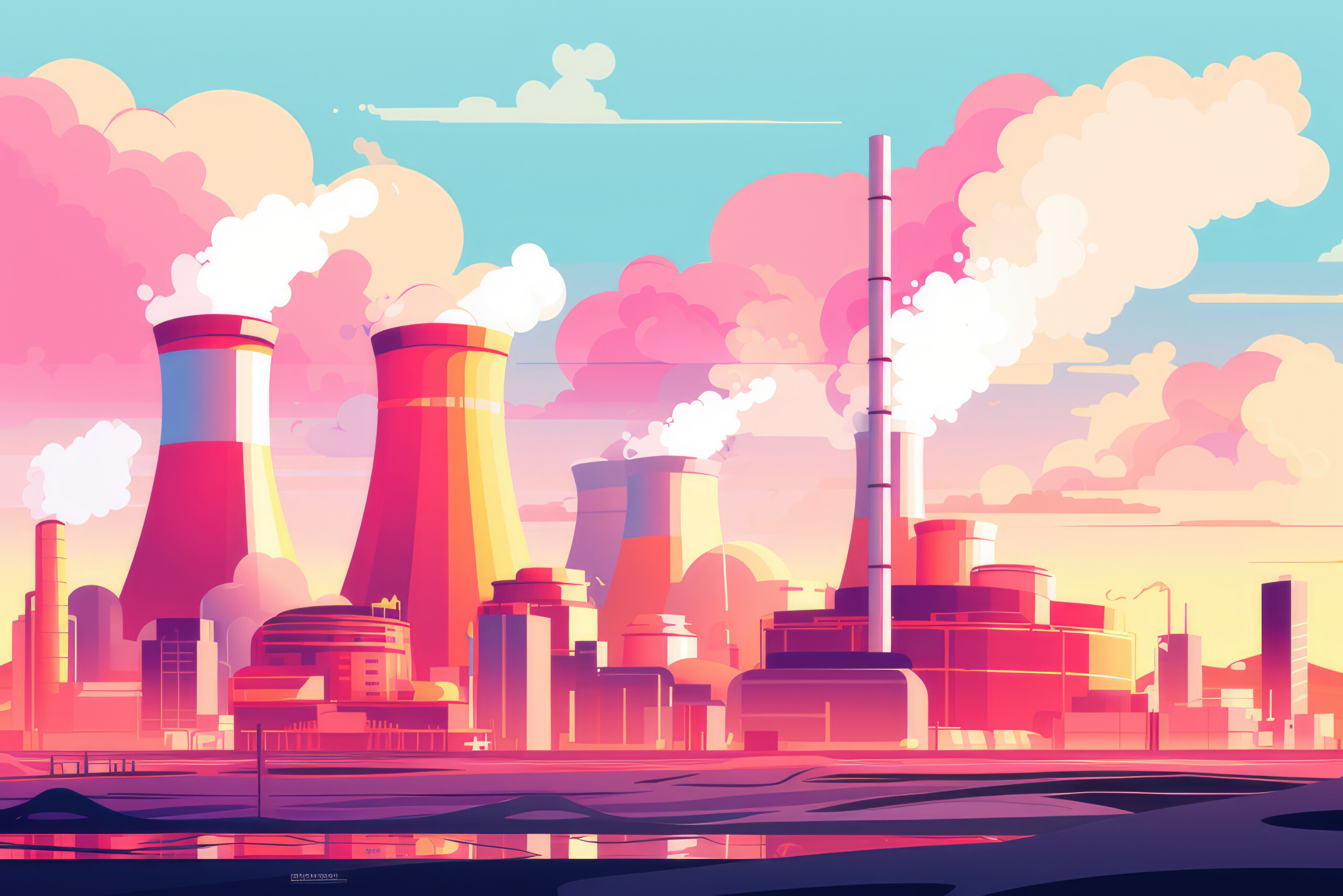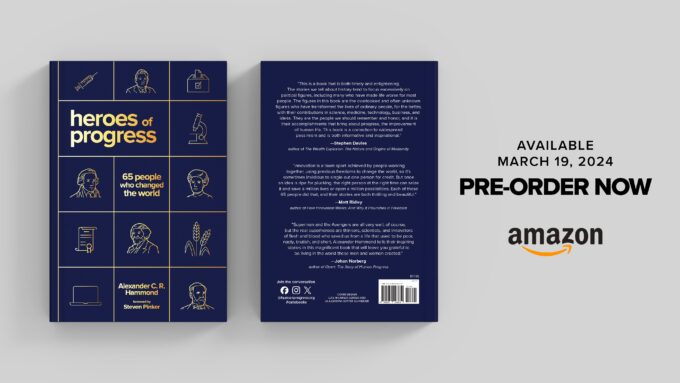Summary: In this article, Zion Lights explores the benefits of an energy-abundant future powered by clean and reliable sources such as nuclear energy. She challenges the misplaced nostalgia and the fear of new technology that can hinder human progress and highlights the importance of energy access for improving global living standards.
It’s good to remember the past. Through studying history, we can learn more about ourselves as well as from our mistakes, which enables us to make improvements and pass important information on to future generations.
But there is a danger of being so focused on the past that we reject the new, even when potential changes might be of great benefit to us. While examining and criticizing new technologies can serve an important function in addressing potential shortcomings of discoveries, technology panics can also hinder progress. That has happened with the slow deployment of nuclear energy, the backlash against genetically modified organisms, and so on.
Perhaps there is a natural desire to want things to go back to “the way they were,” whether looking at things through rose-tinted lenses or because of the simple desire for a return to our youth.
For example, I recently read an article about mud houses in Burkina Faso. They seem idyllic: built by the community, built by hand, made of local natural resources, and able to help keep people cool in hot temperatures, which was the supposed focus of the article. But the piece veered constantly toward a rose-tinted lens, with a focus on those who lament the loss of mud housing and on how it could be made more appealing to younger generations, as so many younger people favor concrete buildings. Indeed, concrete houses don’t keep the heat out as well, but they do have air conditioning and electricity, and mud house walls have often collapsed and killed the people inside. People who move to higher-quality concrete housing (although the article does not call it higher quality) simply don’t look back.
Of course, the article is not written by someone who lives in a mud dwelling, but the writer has that lens. The writer ends by quoting a student who has never lived in anything other than a mud house or with electricity, stating that he is happy to live there—completely ignoring the point that people who can experience better accommodations stick with it. The article also describes concrete housing as a “gateway, once people can afford it, to another fossil-fuel-guzzling invention: air conditioning.” But air conditioning is not inherently “fossil-fuel guzzling”: since air conditioners are powered by electricity, if the electricity is clean, they can be environmentally neutral.
This is a classic example of rejecting the new and believing that the grass is greener as we look from our concrete houses to those who are living in the mud. If we don’t want to go back to living in mud houses, we need to look ahead. We move forward because progress makes life better. So, what might an energy-abundant future look like?
First, let us look back. Crushing poverty was the norm everywhere for almost all human history. We were only able to escape poverty through access to energy, and we now lead energy-rich lifestyles. Although many countries are implementing energy-saving and energy-efficiency measures, it is a fantasy to think that we will ever go back to living low-energy lifestyles. Humankind will always find novel ways to consume large amounts of energy.
Energy usage is already increasing as societies shift toward electrifying everything—from diesel cars to electric vehicles, from gas boilers to heat pumps, etc. If we want to shift toward public transport to reduce the number of vehicles on the road, electric buses and trains will also require a vast amount of energy.
Traditional environmentalists have long argued that we should live with less energy, but the reality is that humans are fantastic at finding ways to use more energy, not less. But what might an energy-abundant future look like? And who knows what technology might revolutionize our lives for the better?
Air conditioning
Air conditioning is one example of a technology that makes our lives better. We know that the planet is heating and that people die in heat waves. The need to roll out air conditioning is essential, especially in warmer climates.
As Singapore’s late first prime minister Lee Kuan Yew once said: “Air conditioning was a most important invention for us, perhaps one of the signal inventions of history. It changed the nature of civilization by making development possible in the tropics. Without air conditioning you can work only in the cool early-morning hours or at dusk. The first thing I did upon becoming prime minister was to install air conditioners in buildings where the civil service worked. This was key to public efficiency.”
According to the International Energy Agency, of the nearly three billion people living in the hottest parts of the world, only 8 percent have access to air conditioning. Powering more will save lives and won’t be a problem in a high-energy, nuclear-powered future. Preparing for a high-energy, low-carbon, climate-changed future means building air conditioning units en masse.
Artificial Intelligence (AI)
When most of us think about AI, we imagine chatbots and generated imagery. AI systems do require a lot of electricity—one study found that training an AI language-processing system produced 1,400 pounds of emissions.
But there’s more to AI than meets the eye. It is already revolutionizing the way we live, and we should make sure we can power it rather than worrying about how much energy it needs. AI is already being used to fight cancer, reduce repetitive tasks for workers, protect elephants from poachers, improve access to education through digital learning, improve customer services, and improve disaster responses. AI is also being used to strengthen climate predictions, which enables smarter decision-making for decarbonizing industries.
In Japan, AI is helping an aging population. Japanese people are living longer and having fewer children, but the country also has a shortage of care workers. So who is caring for the elderly residents? The answer is, increasingly, robots. In Japan, AI bots patrol rooms in care homes at night to check on residents and alert care workers when something is wrong. For example, Aeolus is a self-navigating AI-equipped robot that can detect abnormalities in residents as they sleep and assist in infection countermeasures by disinfecting commonly touched places in the building.
At the Yume Paritiis nursing home in Amagasaki near Osaka, androids that look like dolls are given to dementia patients to stimulate conversation. Telenoid enables caregivers to speak to patients remotely, which is essential when there are 500 patients to 150 caregivers. A robot called Hug carries people from wheelchairs to beds, which means less physical exertion and fewer injuries for staff members.
Since China, South Korea, Italy, and Germany are on a similar trajectory in terms of aging populations (as is the United States albeit at a slower pace), many billions of people will benefit from Japan’s developing AI technologies. We all want to live longer and be healthier for longer. But what would happen to aging populations if electricity wasn’t abundant? AI technology will need a lot of energy to expand and keep it running to enable people to live well. This is yet another argument for building a lot more nuclear reactors to power such a future reliably.
Water desalination plants
When roughly one-fifth of the world’s population does not have access to safe drinking water (and numbers are likely to rise unless adaptive measures are taken), an obvious solution is desalination. UNESCO has reported that the freshwater shortfall worldwide will rise to 500 trillion gallons per year by 2025.
Luckily, this problem can be easily solved. Water desalination technologies are capable of treating water from a wide variety of sources, including brackish groundwater, surface water, seawater, and domestic and industrial wastewater. As ever, there is a small cost to the environment, and environmentalists argue that the wastewater from desalination is problematic, but MIT has developed a process to reuse it.
According to the International Atomic Energy Agency, “Only nuclear reactors are capable of delivering the copious quantities of energy required for large-scale desalination projects” in the future. At present, only a few desalination plants operating worldwide are powered by nuclear energy. For example, due to water shortages in South Africa, a small groundwater desalination plant was built at the Koeberg nuclear power plant. It produces water solely for use by the plant, but there are also plans for a seawater desalination plant. Abu Dhabi is one of the largest places in the world to rely on water desalination, producing 9 percent of total desalinated water worldwide. This includes drinking water. One of the organizations involved has stated that “desalination still now remains one of the most viable sources to feed large communities.”
Instead of scaremongering about a future without water, politicians and journalists could instead talk about the solutions and ensure that they are implemented. If we start building desalination and nuclear plants now, we can avoid the worst of the predicted water shortages, as well as protect food crops, without contributing heavily to greenhouse gas emissions.
Turquoise-tinted glasses
So far I’ve used a few practical examples that could be implemented now as part of a high-energy future that would improve life for billions of people. Now, what if we don a pair of turquoise-tinted glasses and imagine even further ahead?
One policy paper does just that, exploring the notion of “energy superabundance.” The authors imagine flying cars, hyperloop networks, electric autonomous trucking, and water-from-air condensation, among other things. They envision scenarios for tackling energy inequality in poorer nations, replacing environmentally polluting materials like plastics and concrete, and using alternative farming methods to feed people more efficiently. Its authors even predict a carbon shortage through the deployment of some of these technologies. This is the good news we all need, and it’s potentially within our grasp.
The paper concludes: “Despite the great increases in output and well-being that could be achieved through superabundant energy, the outcomes we have described are still, in the grand scheme of things, only the beginning. They still, for the most part, assume levels of energy and power density achievable with near-term technologies.”
And through space exploration, humanity has gained life-changing technologies as well as knowledge about the nature of our universe and our place within it. Exploring the universe also requires vast amounts of energy, and progress has already been slowed in this regard due to energy shortages.
Aiming for a high-energy future is essential for human progress, and the good news is that it’s entirely achievable with the technology and knowledge that is available to us today. We can all aspire to live in houses that don’t cave in, can be cooled in the summer and heated in the winter, and aren’t made of mud. The future looks bright. We only need to reach out and grasp it.



